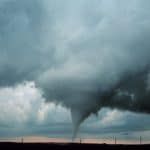Animals: The world’s best (and cheapest) biosensors
By Laura H. Kahn | March 13, 2007
While policy makers fret over the obstacles in developing biosensor technology, the best and cheapest biosensors are already distributed globally but generally ignored: They’re called animals. The United States has spent millions of dollars to develop biosensors that would detect bioterrorism or other deadly agents. But so far, the technology has not met expectations and questions have arisen as to whether additional spending is warranted for civilian applications. (See Steve Bunk’s July 2002 Scientist article “Sensing Evil.”)
The 2003 monkeypox outbreak in the Midwest was not detected until it appeared in humans. No one noticed the sick prairie dogs that shared housing with exotic African rodents. Fifteen prairie dogs became ill after a wholesale pet store sold approximately 100 of these animals. Of the 15 sick prairie dogs, 10 rapidly died. Only two were examined; the rest were destroyed. Only after 37 humans became ill was the cause of the outbreak identified.
In January 2007, the University of Illinois College of Veterinary Medicine held a “One Medicine” colloquium to promote the link between human and animal health. The idea is not new. Such a concept was described and promoted in the landmark book Veterinary Medicine and Human Health in the 1980s by the late Calvin Schwabe, a veterinary epidemiologist and parasitologist. Schwabe’s book proposed a unified human and veterinary approach against zoonotic diseases that built on the vision and principles initially advocated by German physician and pathologist Rudolf Virchow in the nineteenth century.
What is new is that the University of Illinois College of Veterinary Medicine plans to establish a One Medicine Institute that would integrate education, research, and clinical applications involving human, veterinary, and ecological health as well as public health and epidemiology. The center would educate a new cadre of professionals trained in these disciplines in order to meet the twenty-first century challenges of emerging zoonotic diseases and potential bioterrorism agents.
Historically, human and animal diseases have been treated as largely separate entities; physicians and veterinarians rarely communicate or collaborate. The ecology of microorganisms is generally not taught in medical schools, so medical students might not see the importance of animal health on human health. But the increasing number of zoonotic agents infecting human populations illustrates the importance of this issue.
Unlike most other institutions, the University of Illinois has an advantage in that its colleges of medicine and veterinary medicine share the same campus, which facilitates collaboration. Many universities have their veterinary college in a rural setting and their medical school in an urban setting. For example, Cornell University’s veterinary college is in upstate New York, while its medical school is located in New York City. Under these circumstances, collaboration is difficult at best.
Another difficulty is that there are only 28 accredited schools of veterinary medicine in the United States compared to 125 accredited medical schools. The nearly 4.5-fold difference poses a further communication dilemma between the two disciplines. Globally, the discrepant ratio is about the same.
According to the Foundation for the Advancement of International Medical Education and Research, there are more than 2,000 medical schools worldwide; in contrast, there are approximately 440 veterinary medical schools worldwide. The American Veterinary Medical Association Council on Education lists only 12 accredited veterinary medical schools outside of the United States. The number of well-trained veterinarians available is arguably not enough to meet the global challenges of emerging zoonotic diseases. So what should these professionals do?
In her presentation at the colloquium, “Integrated Bio-Surveillance: It’s Time We Stop Using Taxpayers as Sentinels,” Tracey McNamara, a veterinary medical pathologist, described the challenges of utilizing animal species as sentinels for zoonotic threats. Many species (including dogs, cats, pet prairie dogs, zoo animals, and urban wildlife) fall below the radar of any federal agencies. No one is monitoring them even though they have proven to be of immense importance in the early detection of human disease outbreaks.
McNamara set up a national disease surveillance system in zoos because the exotic animals housed there have broad susceptibilities and zoos do active disease surveillance. She argued that zoo animals make good sentinels because they represent a stationary population, they are spread across the entire United States, and they are generally in close proximity to humans. Many of these animals are extremely valuable because they are often endangered species. Zoos also have veterinary medical expertise as well as diagnostic pathology and archival material of serum banks and tissue samples.
According to McNamara, this national zoo surveillance network detected positive West Nile virus cases several weeks before public health departments in three out of the four years of testing. At a time when most health departments were testing only crows, the surveillance network’s testing expanded the species susceptibility list dramatically. For example, the network identified the first reptile with West Nile virus, along with a novel, but different, virus in crows that mimicked West Nile virus. In addition, because it could follow known individual animals over time, the surveillance network showed that exposed but asymptomatic birds and mammals could have significant neuropathology as a result of exposure to West Nile virus. (Besides zoo animals, nonagricultural wildlife are also an extremely important sentinel group for emerging zoonotic epidemics.)
From 2001 to 2004, Duane Gubler, the head of the Centers for Disease Control and Prevention laboratory in Fort Collins, Colorado, represented the major source of support for this network, which cost just $300,000 during the four-year period. Sadly, once Gubler left his position, the funding ceased. According to McNamara, the network hasn’t seen a dime since.
If we use weather forecasting as an analogy to zoonotic disease forecasting, the ability to accurately forecast weather changes did not happen until weather satellites were launched in the early 1960s. For the first time in history, scientists could track and follow storms such as hurricanes and warn populations to evacuate with a higher level of accuracy. (Whether they choose to heed these warnings or not is another matter).
Just as hurricanes are a part of life on this planet, so are infectious disease epidemics. We need to develop “biological” satellites that would identify epidemics at their earliest possible stages in order to prepare and warn populations. By necessity, these biological satellites would include close surveillance of nonagricultural wildlife and require a global cadre of well-educated veterinarians and others involved in ecological monitoring.
Those of us who are truly concerned about early identification of emerging infectious diseases and bioterrorism should promote and encourage the funding of programs such as the national zoo surveillance network and other programs that focus on the surveillance of nonagricultural species. Time and again, they’ve proven to be the best and cheapest environmental biosensors around.
Together, we make the world safer.
The Bulletin elevates expert voices above the noise. But as an independent nonprofit organization, our operations depend on the support of readers like you. Help us continue to deliver quality journalism that holds leaders accountable. Your support of our work at any level is important. In return, we promise our coverage will be understandable, influential, vigilant, solution-oriented, and fair-minded. Together we can make a difference.
Topics: Columnists















